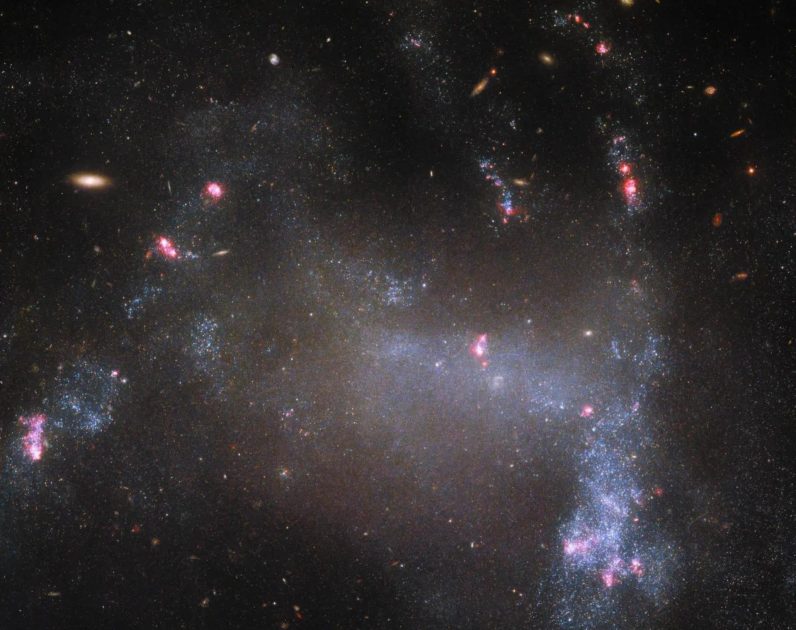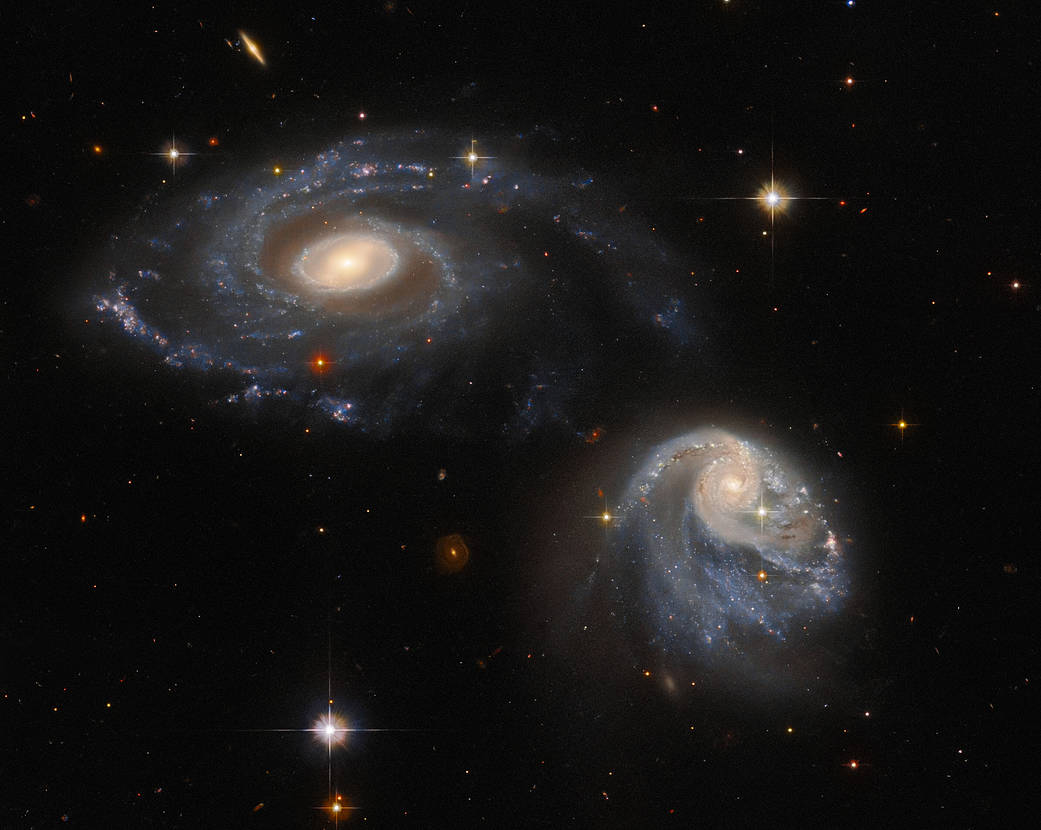Hubble sees a new ‘spider galaxy’
NASA’s Hubble Space Telescope has imaged a Spider Galaxy, known as UGC 5829, located approximately 30 million light-years away from us. This irregular galaxy is named the ‘Spider Galaxy’ for its close resemblance to the limbs of a spider.

The stunning view of the Spider Galaxy has depicted the grandeur of our universe. At its core lies a massive concentration of stars and interstellar material, forming the galaxy’s central body. Extending from this hub are the galaxy’s arms, filled with gas, dust, and stars, their shapes shaped by gravitational interactions.
Unlike typical smooth spirals, the arms of the Spider Galaxy are adorned with patches of vibrant pink, indicating active star formation. These regions, illuminated by young stars, illustrate the ongoing cycle of stellar birth and death within the galaxy.
This spectacular image provides a lot more than just a glimpse of a distant galaxy.
In its long life, the Hubble Space Telescope has captured images of different kinds of galaxies. Through the PHANGS program, it has snapped detailed pictures of 19 spiral galaxies facing us directly, giving us a closer look at their shapes and features. One of the well-known examples of these galaxies include the Whirlpool Galaxy (M51). Hubble’s observations have also hinted at the existence of billions of elliptical galaxies scattered across the universe. M87 is one of them. Among, irregular galaxies, IC 10, which is also known for its bustling star formation.
Few words for Hubble
Since its launch in 1990, NASA’s Hubble Space Telescope has been a real ‘non-living hero’ in astronomy. By capturing stunning images and vital data from deep space, it has helped scientists worldwide unlock the secrets of the universe. Hubble’s contributions, from measuring the rate of the universe’s expansion to discovering dark matter, have been invaluable not only to the scientific community but also to humanity and its civilization as a whole.


